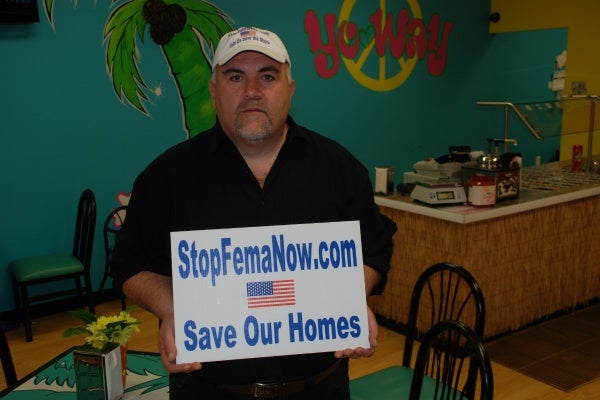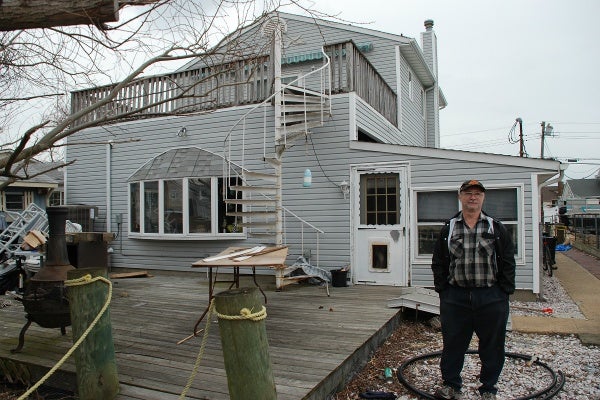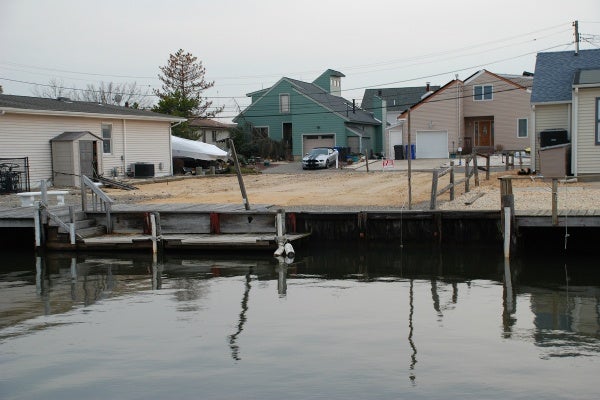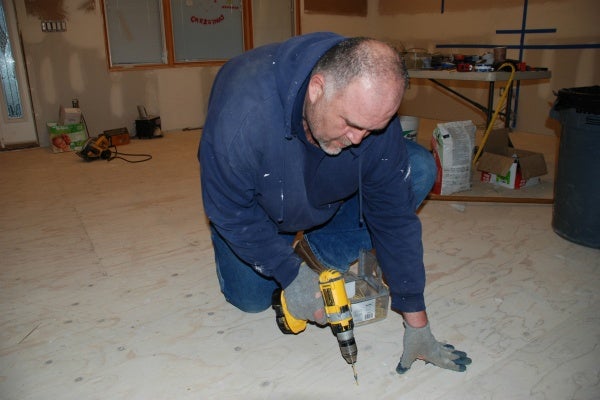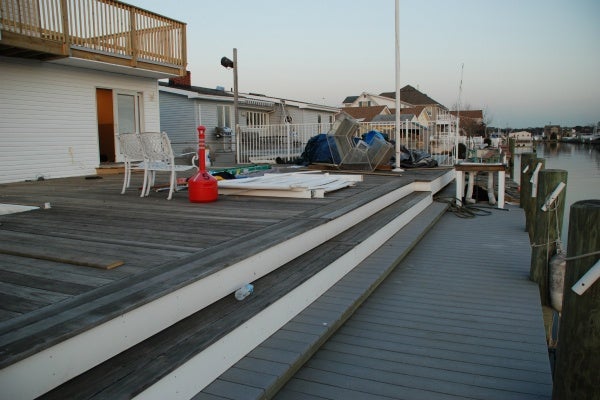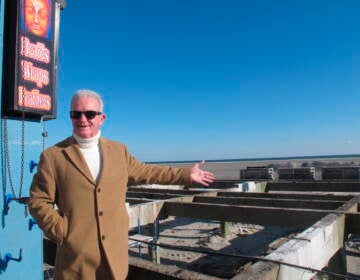Backlash growing to FEMA’s proposed flood maps
Jersey Shore residents are bracing for a powerful nor’easter today, which is expected to cause coastal flooding and beach erosion. More than four months after Superstorm Sandy, how and where to elevate homes to prevent future flooding are pressing topics of concern.
When George Kasimos found out he might have to elevate his Sandy-flooded Toms River home five feet—or pay much higher future insurance premiums—he was so outraged that he launched a “Stop FEMA Now” Facebook page, that has become a rallying point for other, angry homeowners in the same boat.
“There’s a groundswell of support,” said Kasimos at a Stop FEMA Now rally last month, which police politely shut down when the meeting, in a frozen yogurt shop, became dangerously overcrowded. “People are stopping me on the street. Our web site traffic has gone through the roof. My phone rings nonstop,” the 46-year-old real estate agent said. “People are scared that they’re going to lose their homes. It’s starting to sink in now.”
The uproar is over the Federal Emergency Management Agency’s Advisory Base Flood Elevation maps—adopted as the state’s standard by New Jersey Governor Chris Christie in January. Long before Superstorm Sandy, as part of a move to reduce subsidies to the National Flood Insurance Program, FEMA had been preparing to create new Flood Insurance Rate Maps, which will call for much higher insurance premiums for homes in flood-prone areas nationwide.
“The higher you build, the less risk you take on and the less costly your insurance is going to be,” said Chris McKniff, FEMA Public Information Officer for Monmouth and Ocean counties. “Anything closer to base flood elevation and below, it’s going to be very expensive,” he said. “It depends on your home, and it depends on the type of coverage you have, but it could range in the tens of thousands of dollars.”
Kasimos and many of his group’s supporters are particularly upset because their homes are on the Ocean County mainland, across Barnegat Bay, miles from where Sandy devastated oceanfront homes in Mantoloking, Seaside Heights, Ortley and other barrier island towns. They believe their homes—on the bay, rivers and lagoons—only flooded because the ocean breached the island during last October’s storm.
Now scores of storm-weary residents are studying the advisory maps, to figure out whether their homes likely will fall in an “A zone” or a “V zone” when the maps are finalized. The former may mean creating a higher foundation using concrete blocks; the latter, which designates areas that may be subject to pounding waves, requires moving the house, then driving in piles or columns as part of a new foundation, a more complicated and expensive undertaking. Kim Ely said she received a $200,000 estimate to elevate her three-story Brick Township home, now in a V zone.
“I think it’s going to destroy our neighborhood,” said Ely, a Stop FEMA Now supporter, who added she does not have the money—nor the space on her small lot—to do the work. “I think people will just leave the keys on the counter, and just walk away from their homes, because they can’t afford to raise them, and they can’t afford the flood insurance.”
In fact evidence already exists in communities along the New Jersey shore of people throwing in the towel. Directly across the lagoon from Joseph Signore’s Toms River home is an unusual sight: an empty space on the narrow, rectangular waterway otherwise tightly packed with houses. The property owner had the flooded structure torn down, and put up the lot for sale.
“I think there are going to be a lot of empty lots, and nobody is going to want to buy houses around here, not for a long time, not after this flood,” said Signore, who added that even though his home had never flooded before Sandy, he believes its value now has dropped by half.
Signore did much of his home’s repair work himself, to help bridge the gap between his insurance company’s payment and the actual costs. But he said there is no money left to elevate his house, which he said also is impractical because his handicapped wife uses a wheelchair.
“I just may end up without flood insurance depending on what they want to charge me for it,” said Signore, who owns his home outright, and therefore is not required to carry insurance. “So I’m guessing the next flood will be on me.”
Signore said he plans to attend the next Stop FEMA Now meeting this Saturday, which will be held in a larger venue, Silverton First Aid Squad in Toms River, in anticipation of another big crowd. During the session residents are expected to discuss plans to appeal the flood maps, and how to apply for grants to elevate homes. Kasimos said a Toms River Township councilman has promised to attend, to listen to the group’s concerns.
“Our ultimate goal is for FEMA to lower the zone designations from V zones to A zones where appropriate,” said Kasimos. “We believe a majority of their maps are not correct. We would also like to see the flood insurance come down to a reasonable rate.”
Less than two months after Stop FEMA Now’s founding, the group’s Facebook page has more than 1,100 fans, and Kasimos said only time will tell how large his fledgling, grass-roots group will grow. “The people will let us know how big our organization is going to be. I never grew up wanting to be a Stop FEMA Now advocate,” he said, laughing. “I wanted to live my life. But unfortunately the federal government gave me no choice.”
______________________________________________________________
Sandy Levine is a freelance writer and television producer who was born and raised at the Jersey Shore.
WHYY is your source for fact-based, in-depth journalism and information. As a nonprofit organization, we rely on financial support from readers like you. Please give today.


